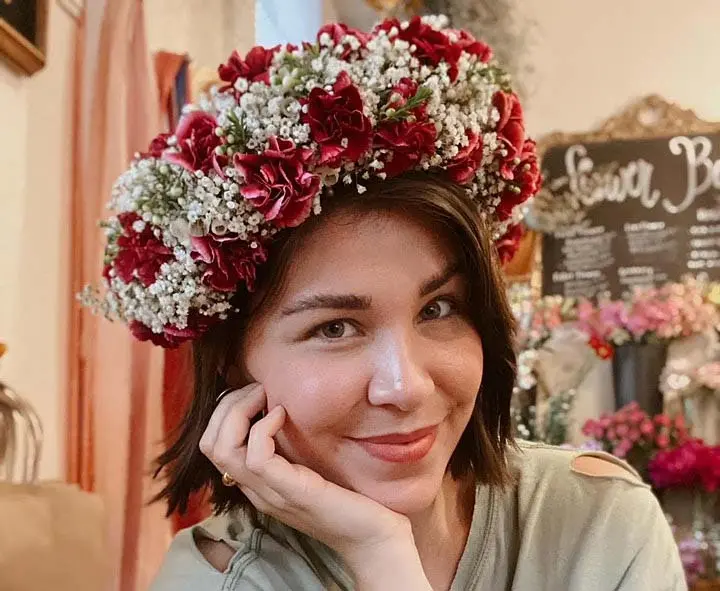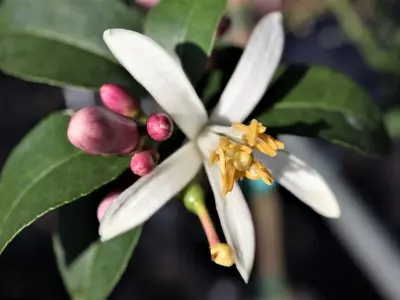by Amanda Rose Newton
Flower crowns are not just for weddings and children’s fairy celebrations; they feature a robust history going all the way back to Ancient Greece. In fact, Julius Caesar’s famous laurel crown is a spin on the classic floral headpiece, and cultures from around the world have been crafting classic crowns for centuries!

Plant parents can relate to the notion that a crown of greenery ornamented with flowers is worth just as much as one made of gold.
Below, we’ll explore the history of this timeless tradition and invite you to attend The Patinaed Fleur’s Plant Buzz workshop where you can create your own priceless flower crown while enjoying local beer and wine.
An Honored Tradition
Throughout history, flower crowns were the go-to for special events, especially popular at weddings and sporting events.
Back in Ancient Greece, many of the gods and goddesses were depicted wearing either laurel foliage or ornate floral masterpieces in their day-to-day lives. In fact, floral crowns were reserved for those who achieved “godlike” status, typically through sporting events or military victories.
Flower crowns meant respect and honor, and served as a tangible symbol of accomplishment.
Ukraine was a flower crown (known as “vinok”) hot spot for centuries, where they are a central part of the traditional folk dress. During weddings, wreaths made of myrtle were placed on the heads of the couple after vows were exchanged. To this day, flower crowns are a must at weddings and festivals year-round.
Like Ukraine, China is also famous for its use of flower crowns at weddings, usually going for orange blossoms. Since oranges are on the tree at the same time as the flower, it was hoped this natural fertility would pass on to the newlyweds.

The Victorian Era is THE flower era! Not only were flowers given their own language, but the popularity of the flower crown soared thanks to Queen Victoria wearing one to her wedding. In fact, gathering orange blossoms (borrowed from the Chinese custom) became synonymous with looking for a wife.
“Flower Children” of the 1960s made the flower crown into an everyday appropriate accessory. Since flower crowns symbolize love and celebration, why wouldn’t you want to wear one every day? We are giving you full permission to do so!
Best Flowers for Flower Crowns
The best part of making a crown is how easy it is to make one that truly is unique to you. While some flowers are better than others, just about any you would like to use will work– especially if dried beforehand. Here is a simple list of a few foolproof options:
STATEMENT FLOWERS
Roses
Daisies
Dahlias
Carnation
Orchids
Mums
FILLER
Baby’s Breath
Lavender
Rosemary
Herbs
Holly Berries
ADD SOME GREEN
Ivy
Ferns
Dusty Miller
Succulents
Flower Crown Making Tools:
• Scissors that can cut wire
• Craft Wire (any color)
• Floral Wire (wrapped to be soft against head)
• Floral Tape
• Flowers
Directions:
1. Measure your head! Take the wire and wrap it around your head leaving ½ inch of wiggle room. Secure ends with floral tape.
2. Start with greens: use tape to attach greenery stems to wire.
3. Flower power: create mini-bunches (3 or so) by wrapping stems together with floral tape from the base of bloom to the bottom of the stem. Combine with filler flowers to achieve an ideal look making roughly 8 total bunches.
4. Stringing them along: fasten stems to crown with craft wire or more tape. Layer more blooms over the stems to create a seamless look by placing flowers in one direction. Keep layering until satisfied.
5. Keep it cool: store crowns in the refrigerator to prolong their life. Give it a quick spritz of water before wearing it out.


